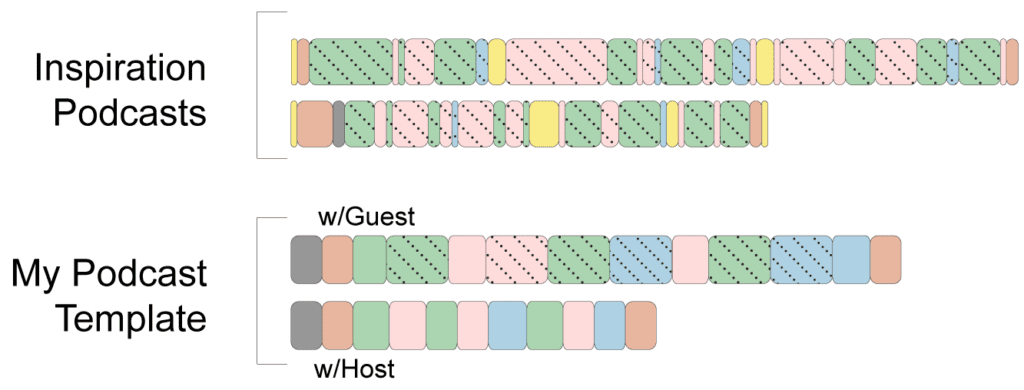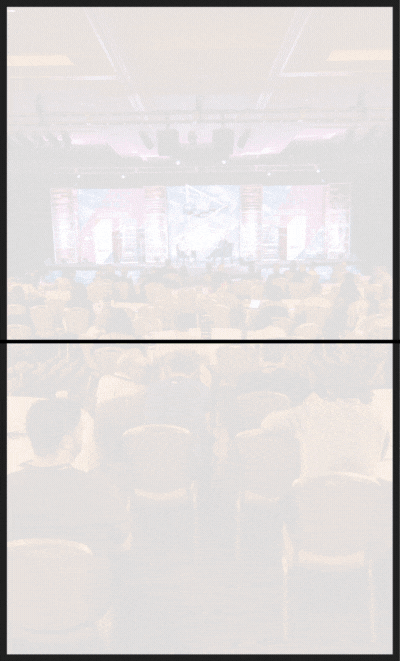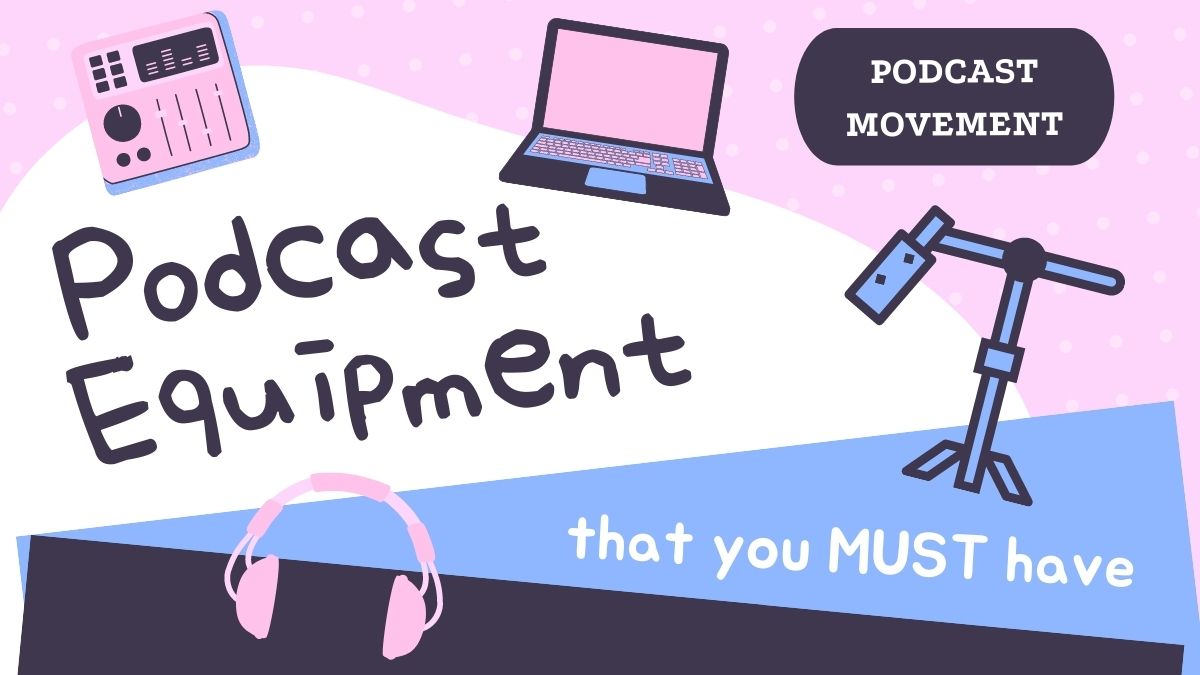Producing a podcast is time-consuming
Earlier this year, I found myself in a painful situation — I had a podcast that I loved creating, but I felt like I needed to quit. Between kids and my regular job, the 10 to 20-hour production time per episode was severely weighing on me.
To keep it going, I needed to drastically reduce my production time without sacrificing quality. For me, the part that took the longest was organizing my research into an interesting audio story, so I began brainstorming ways to improve it.

Is there a recipe for an interesting audio story?
Because I’m a data analyst, I began collecting data on the top podcasts, hoping it would reveal the secret recipe for producing an interesting audio story. I chose the top two podcasts in each category (as of mid-May 2019) in the U.S. iTunes Top Charts and collected data on their most recent episode. I noted how long each segment in the show lasted, what type of segment I thought it was, whether it was with the host or a guest and if the podcast was serialized.
That’s 22 hours of audio that I listened to, reviewed, and visualized!

There’s no recipe, but there are patterns
I found that while there’s not one single recipe for an interesting audio story (surprise!), there are patterns that I could use to make a template to streamline my own podcast production. I found three distinct patterns and used them to create my template.
1) The top podcasts keep the story moving by alternating the TYPE of segment between entertaining, inspirational, and educational.
They mix these types of segments together to take us somewhere better than before:
- The unknown to known,
- Isolated to connected,
- Lost to inspired.
Each episode uses two or three different types of segments to keep the story moving. I created a way to visually represent every podcast episode with shapes and colors so I could see how these segment types are used. Each segment is a rectangle — the length represents the duration of the segment and the color is the type of segment (teaser, intro/outro, inspire, entertain, educate, or advertisement).

By visualizing the data that I collected, I could actually see what’s going on at a higher level…
2) The DURATION of these segments is influenced by the podcast’s category and audience expectations.
For the 32 episodes that I collected data on, the average segment duration was 143 seconds. The median was 60 seconds, which means half of the segments were under 60 seconds and half were over 60 seconds.

I found that generally speaking, if you’re not changing your segment type every minute or two, then you’re relying more on your celebrity or your audience’s passion for the topic to keep them listening. A handful of podcasts had really long segments, which tended to be in the Comedy or TV & Film categories. For example, here’s a look at a Game of Thrones podcast episode where the hosts are discussing their thoughts on the finale:

The average segment length in this show is 448 seconds. They’re not worried about keeping the story moving because they know their audience is deeply committed to the topic.
3) The PATTERN of the segments is also influenced by the podcast’s category and audience expectations.
The order and frequency in which podcasts use entertaining, inspirational and educational segments is influenced by the category and audience’s expectations.
For example, the two episodes that I reviewed in the Religion & Spirituality category alternated between entertaining (personal stories) and inspirational (encouraging words) segments more than any other category did. They know that their audience is tuning in to be inspired and to feel connected to the speaker.

I realized that I needed to study my category and audience to help guide me toward choosing an appropriate pattern.
Bottom line: to create an interesting audio story…
- Alternate your segments between entertaining, inspirational, and educational.
- Keep each segment length around two minutes unless you’re leaning on your celebrity or high niche interest.
- Keep the pattern of the segment types in line with your audience’s expectations and needs.

How I created my production template
Knowing this, I chose two podcasts to use as inspiration for my own production template — one that fit my category and another that was serving their audience in the same way that I want to serve mine. I grabbed their visualization from my data set and noticed their patterns of using an entertaining segment right before an educational segment to make it more interesting. They also had short inspirational segments half-way and at the end. I sketched out what the visualization of my podcast could look like with ~2-minute segments.

Now I can actually see how to keep my story moving. I use this template as a guide to insert my research into each segment to make sure I’m keeping my story moving and interesting. For my interviews, I use the template to plan out my questions and my interjections. Of course, I don’t need to follow the template down to the second, and I always swap sections out here and there, but it’s a solid starting point that has transformed my production process into something enjoyable again.
I’ve cut my production time in half because now I have clarity around the structure of my story, and I’m not stressing about it. All I need to do is focus on fleshing it out with content.

Your Turn
Everyone has a unique experience to share with the world, but turning it into an interesting audio story can be stressful. If you’re stressing over your production time, a production template can be a useful tool to learn storytelling techniques of other successful podcasts. My template is available here.



Join the Movement